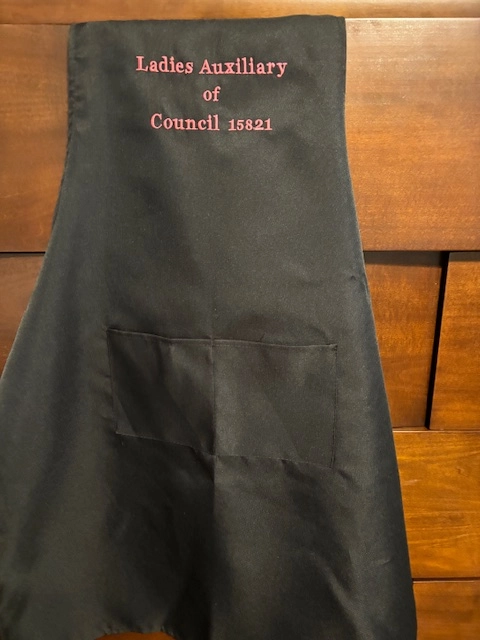Heat Transfer on T-Shirts and Aprons - Personalized Designs and Logo Designs
Heat Transfer on T-Shirts and Aprons - Personalized Designs and Logo Designs
Blog Article
The Art of Personalized Needlework: Unlocking the Secrets to Creating Special and Remarkable Layouts
The secrets to creating customized embroidery styles that mesmerize the eye and leave a long-term perception lie in a fragile balance of strategy, creativity, and focus to detail. As we dive right into the globe of custom embroidery, we uncover the nuanced interaction between thread option, sew intricacy, and design customization that elevates a mere garment to a work of art.
Choosing the Right Embroidery Threads
When picking needlework strings, what vital aspects should you consider to make certain the very best outcomes for your personalized layouts? The choice of embroidery string is crucial in establishing the last result of your embroidered layout. One of the main considerations is the material of the string. Different materials such as cotton, polyester, rayon, and silk offer varying levels of shine, longevity, and texture. It is vital to pick a string material that matches the textile you are stitching on and straightens with the wanted look of the layout.
Thicker strings can add measurement and appearance to your design, while finer strings are ideal for intricate information and little message. Additionally, considering the shade fastness and washability of the thread is critical to make sure that your customized layouts keep their high quality and vibrancy over time.
Exploring Different Stitch Techniques
To dig into the realm of 'Discovering Different Stitch Techniques', one need to comprehend the complexities and subtleties that each stitching method brings to the art of needlework. Different stitch methods not only add aesthetic interest however also contribute to the general appearance and measurement of the design. One preferred stitch strategy is the satin stitch, which involves carefully stuffed parallel stitches to create a smooth and glossy surface, perfect for completing shapes and developing bold outlines.
On the various other hand, the backstitch is a functional strategy typically utilized for describing and adding fine information. It includes sewing in reverse to create a solid line of embroidery. Additionally, the French knot stitch adds a responsive component to designs, ideal for producing distinctive accents like blossom facilities or ornamental touches.
Checking out various stitch strategies allows embroiderers to have fun with light, darkness, and deepness within their layouts, elevating the visual appeal and artistic high quality of their needlework jobs. By understanding numerous sewing methods, one can unlock limitless opportunities for developing one-of-a-kind and memorable custom-made needlework items.
Incorporating Personalized Style Aspects
Having actually explored the intricacies of different stitch techniques such as the satin stitch, backstitch, and French knot, the emphasis now moves in the direction of integrating tailored layout components in personalized needlework tasks. Personalized design elements play an important function in making embroidery projects absolutely one-of-a-kind and remarkable. One means to include customization is by adding initials, names, or significant days find out to the layout. This not just adds a personalized touch but likewise enhances the nostalgic worth of the needlework piece.
One more way to integrate customized layout aspects is by consisting of signs or motifs that hold special meaning to the recipient or reflect their passions and personality. Integrating a favorite blossom, pet, or hobby-related sign can make the needlework design a lot more significant and personalized. Furthermore, picking colors that resonate with the recipient or straighten with the intended motif can even more improve the customization of the embroidery job.
Understanding the Art of Shade Sychronisation
One key facet of color control is understanding shade theory. This includes recognizing how various colors engage with each various other, the emotions they share, and how they can be integrated to create visually enticing designs. By applying shade concept principles, embroiderers can develop harmonious color palettes that boost the total look of the layout.
Additionally, taking note of comparison is vital in shade coordination. Using contrasting shades can aid specific components of the style pop, enhance legibility, and produce an aesthetically dynamic needlework piece. By grasping the art of color control, embroiderers can raise their designs and create unforgettable items that reverberate with customers and viewers alike.
Enhancing Texture With Advanced Needlework Stitches

French knots, for instance, are best for including tiny, elevated dots to your design, imitating shirts made near me the appearance of grains or developing a distinctive surface. Bullion knots, on the other hand, can be used to produce twisted, ropelike aspects that include an elegant feel to the embroidery. Seed stitching includes small, scattered stitches that can load in locations with a speckled appearance, while turkey job creates fluffy, dimensional accents reminiscent of animal fur or foliage. Experimenting with these advanced embroidery stitches allows you to press the borders of traditional needlework and create truly unique and visually appealing textures in your designs.
Verdict
Finally, the art of custom-made embroidery involves a mix of choosing the best threads, discovering different stitch methods, incorporating personalized layout components, grasping color control, and improving texture with advanced stitches. By recognizing and implementing these vital components, embroiderers can produce distinct and memorable layouts that showcase their creative thinking and ability. Embroidery lovers can unlock the keys to producing gorgeous and custom pieces that attract attention and leave an enduring perception.
Report this page